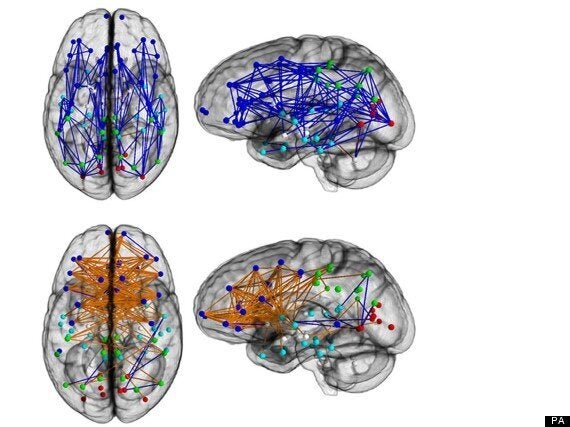Men are from Mars and women from Venus, they say - and a look inside their brains suggests it could be true.
A new study has confirmed that men and women's brains are wired in completely different ways, as if they were species from different planets.
Men generally have more connections within each hemisphere of the brain, while in women the two halves of the brain are much more interlinked.

Brains of men also contain more nerve fibres and those of women a greater proportion of "grey matter" consisting of the cell bodies of neurons.
The different patterns in brain structure are likely to explain differences in behaviour and skills seen in men and women, say the US scientists led by Dr Ragini Verma, from the University of Pennsylvania.
Men's brains appear mainly configured to co-ordinate perception and action. Women's are more geared up to integrate "heart and mind" thought processes, linking analytical and intuitive reasoning.
Previous research has shown that men have better motor and spatial skills than women. A surgeon needs good motor skills, for example, to perform precise movements with his hands. Spatial ability, which aids the mental rotation of three-dimensional objects, assists map reading and car parking.
Women on the other hand have been shown to possess superior memories and are better at processing social information. They are better "mind readers" than men, and more sensitive to subtle psychological nuances.
The new findings, published in the journal Proceedings of the National Academy of Sciences, are from a brain scan study of almost 1,000 children and young people aged eight to 22.
Scientists investigated structural wiring within the brain using a special type of magnetic resonance imaging (MRI) called diffusion tensor imaging (DTI). This makes it possible to map "white matter" - the cable-like fibres along which nerve signals pass - in three dimensions.
The results showed "fundamental sex differences in the structural architecture of the human brain".
Writing in the journal, the researchers said: "Male brains during development are structured to facilitate within-lobe and within hemisphere connectivity, with networks that are transitive, modular and discrete, whereas female brains have greater inter-hemispheric connectivity and greater cross-hemispheric participation."

Greater connectivity within brain hemispheres "would confer an efficient system for co-ordinated action in males", the scientists added.
A larger degree of connectivity between hemispheres in women "would facilitate integration of the analytical and sequential reasoning modes of the left hemisphere with the spatial, intuitive processing of information of the right hemisphere".
Behavioural tests revealed "pronounced sex differences" in the participants, said the researchers.
Women out-performed men on "attention, word and face memory, and social cognition tests", while men were better when tested for "spatial processing and motor and sensorimotor speed".
Few differences between the sexes were seen in children younger than 13, the scientists found. However, they became pronounced in adolescents aged 14 to 17 and older young adults.
One particular brain area, the cerebellum, displayed an opposite wiring pattern, with more connectivity between hemispheres in men and more within hemispheres in women.
Part of the so-called "reptilian" hind-brain, the cerebellum is the most ancient brain region and controls muscle movement, co-ordination, and balance.